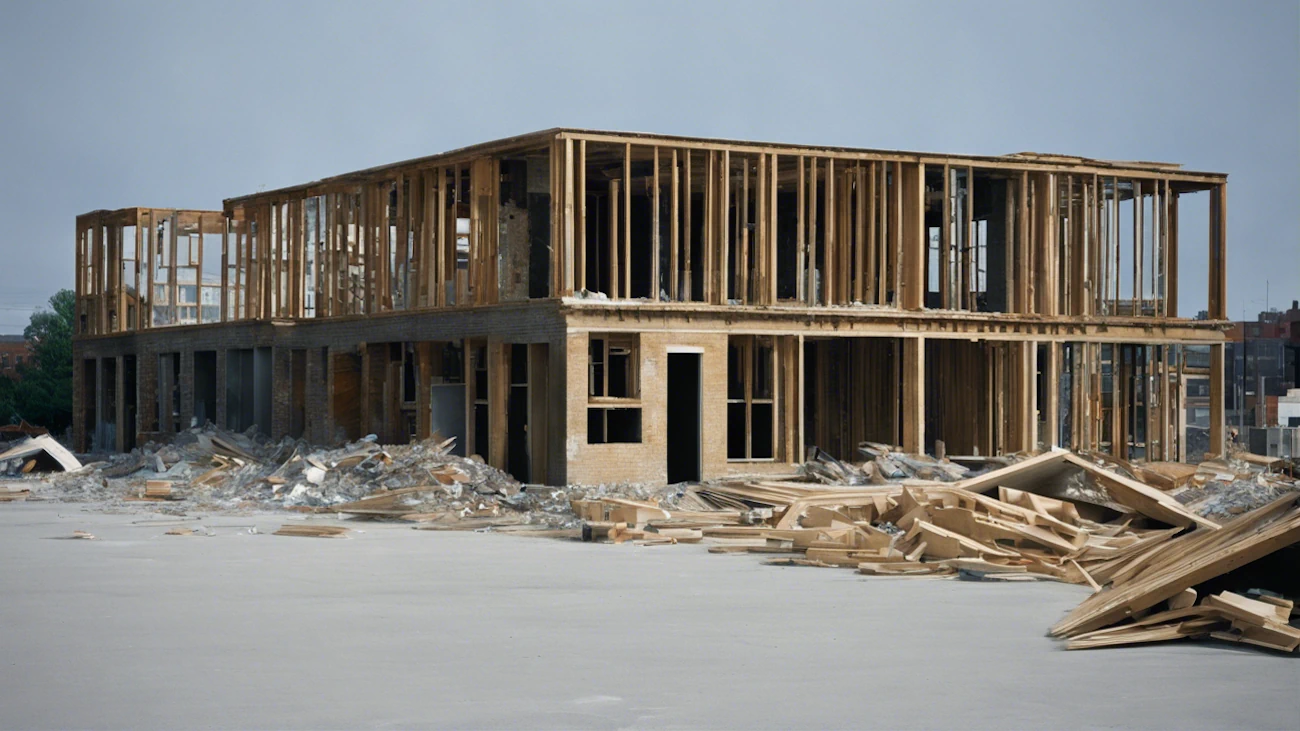Introduction
In the realm of sustainable architecture and construction practices, the concept of deconstruction has gained substantial attention. It stands as a mindful alternative to traditional demolition, focusing on the careful disassembly and salvage of building components for reuse, recycling, or repurposing. This method aims to minimize waste, conserve resources, and contribute to a more environmentally friendly construction industry.
Evolution and origins
The roots of deconstruction can be traced back to the 1970s when environmental concerns started gaining momentum. The practice emerged as a response to the wastefulness of traditional demolition, which often involved the complete destruction of buildings, resulting in massive amounts of construction waste.
Initially gaining traction within the realm of sustainability movements and academia, deconstruction gradually found its way into mainstream construction practices. The approach gained recognition for its potential to reduce the environmental impact of construction while promoting a circular economy by salvaging materials for future use.
Advantages and disadvantages
Advantages:
- Environmental sustainability: Deconstruction significantly reduces the amount of waste sent to landfills by salvaging materials such as wood, metal, bricks, and fixtures for reuse. This practice helps conserve natural resources and minimizes the carbon footprint associated with manufacturing new building materials.
- Resource bonservation: By salvaging materials, deconstruction conserves valuable resources that would otherwise be expended in the production of new building materials. Reusing these components reduces the need for raw materials, thereby preserving forests, reducing energy consumption, and mitigating environmental degradation caused by resource extraction.
- Cost-Efficiency: While deconstruction may require more labor compared to traditional demolition methods, the salvaged materials can offset expenses. Reusable materials, such as doors, windows, and fixtures, can be sold or reused in future construction projects, providing potential cost savings.
- Community benefits: Deconstruction projects can create employment opportunities within local communities, particularly for skilled workers involved in salvaging and processing materials. Additionally, the reuse of salvaged materials in community projects can foster a sense of local pride and connection.
- Enhanced building performance: Incorporating salvaged materials into new construction projects can enhance building performance. Reclaimed wood, for instance, may possess unique characteristics that contribute to improved aesthetics or structural integrity, adding value and character to the new structure.
Disadvantages:
- Labor-Intensive process: Deconstruction involves meticulous manual labor to carefully dismantle and sort building components, which can be more time-consuming and labor-intensive compared to conventional demolition techniques.
- Potential hazards: The process of deconstruction may expose workers to various hazards, such as asbestos, lead-based paint, or other harmful materials used in older buildings. Proper safety measures and assessments are crucial to mitigate these risks.
- Initial cost challenges: While deconstruction can yield cost savings in the long term, the upfront expenses associated with labor and specialized equipment may pose a barrier, especially for smaller-scale projects or those with tight budgets.
- Market demand and availability: The market demand for reclaimed materials may fluctuate, affecting their resale value. Additionally, the availability and quality of salvaged materials might not always meet the specific needs or standards of a construction project.
- Design limitations: The reuse of salvaged materials may impose design limitations due to irregular shapes, sizes, or conditions of the components. This could potentially restrict architectural creativity or necessitate additional customization efforts.
Deconstruction stands as a compelling approach in the construction industry, offering a sustainable alternative to traditional demolition practices. While it presents numerous advantages, including environmental benefits, resource conservation, and potential cost savings, it also comes with challenges related to labor, safety, cost, market demand, and design constraints.
As society continues to prioritize sustainability and environmental stewardship, the integration of deconstruction practices into mainstream construction is poised to play a pivotal role in reshaping the industry's approach to building disposal and resource utilization. With continued innovation, education, and adaptation, the art of selective dismantlement holds the potential to foster a more sustainable and circular construction economy for future generations.
We will address these topics in more detail on this website, I hope you like it!
Are you still interested in this topic?
A good idea is to continue here:

